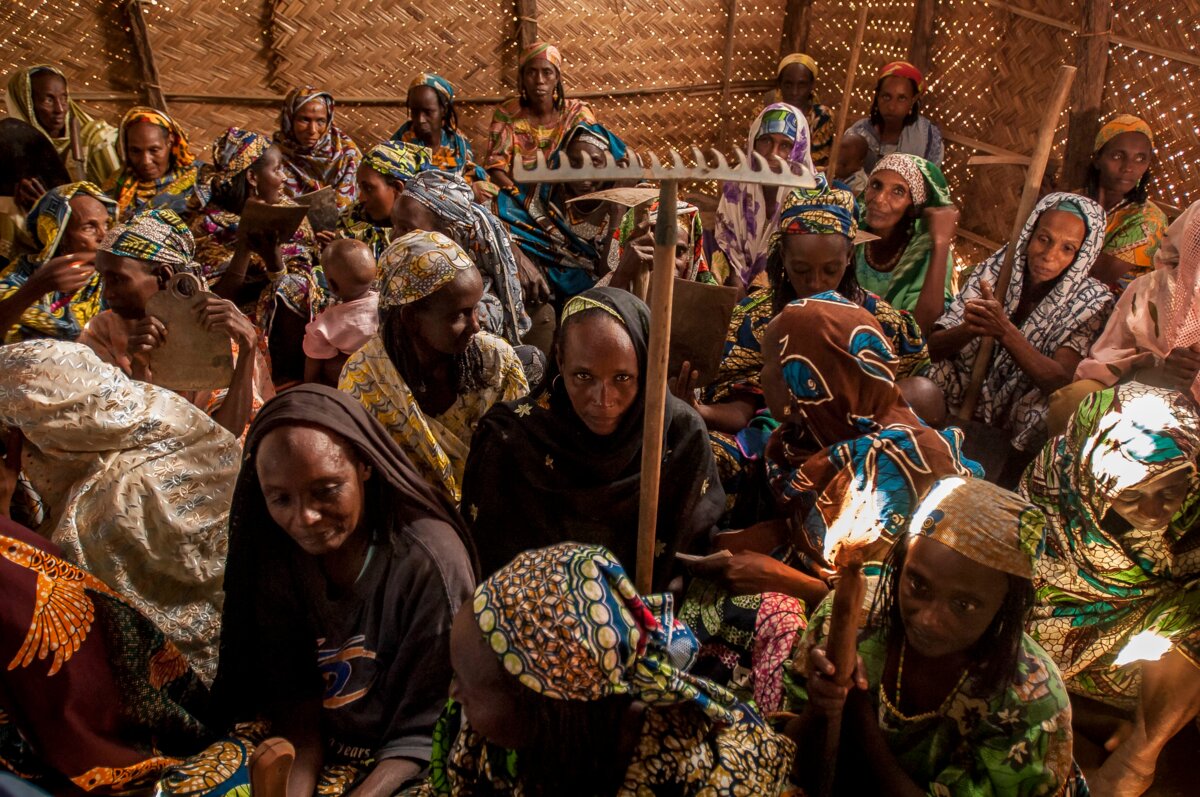
Enlargement : Illustration 1

Bororo women crop growers meet together in Gbiti, a border town in east Cameroon, in 2009. The town is separated from the Central African Republic (CAR) by a strip of water. Gbiti is one of the three principle entry points for Bororo refugees crossing from CAR to Cameroon, along with Garoua-Boulaï and Ngaoui. For these women, who in CAR were mostly wives of cattle herders, to now work the land is something of a cultural revolution.
Portfolio
The plight of the Bororo people fleeing carnage in the Central African Republic
1 photo
More than 100,000 people have fled from the Central African Republic (CAR) to neighbouring Cameroon since the explosion of inter-religious violence in CAR over the past 18 months.The carnage in CAR, a former French colony and majority Christian country, began in earnest after the overthrow by the mostly-Muslim Seleka rebel coalition of the country’s Christian president François Bozizé in March 2013, after which a number of Muslim militias exacted killings and lootings against Christian communities. The inter-religious violence heightened towards the end of 2013, and most notably after the resignation in January this year of Bozizé's successor, Muslim president Michel Djotodia, which saw the retreat back to the north of the country by the Séléka forces, and a resulting campaign of hateful revenge by Christian militias, called the anti-Balakas, against the Muslim population.Since the end of last year, a peace-keeping force of about 2,000 French troops and almost 6,000 soldiers from a pan-African mission, Misca, have been struggling to quell the carnage that has seen tens of thousands of Muslims flee their homes in what Amnesty International has described as a campaign of “ethnic cleansing”. Some have fled to the largely Muslim north of the country, others to neighbouring Chad and Cameroon.Of all the refugees from CAR arriving in Cameroon since March 2013, an estimated 97% are Muslim, while the remainder are Christians and animists. Most of the Muslim refugees are Bororo (also called Wodaabe), a people from the Fulani ethnic group. The Bororo, traditionally nomadic cattle herders, have long been the target of violent persecution in CAR. This began in the mid-2000s, mostly the because of jealousy at their relative affluence gained from the large herds they manage, but spiralled over the past 18 months during the savage conflict between Christians and Muslims in the country.Over several years, French photographer Frédéric Noy, who has long specialised in African affairs, has reported on the plight of the Bororo, and Mediapart publishes here a selection of his photos from both 2009, when many were already forced to flee to Cameroon, and in 2014, when the exodus became massive. “The situation in 2009 is like the embers upon which it sufficed to blow to set-off the manhunt led against the Bororos that we witness today in the Central African Republic,” says Noy.A list of links to Mediapart reports on the situation in CAR can be found at the bottom of this page.



